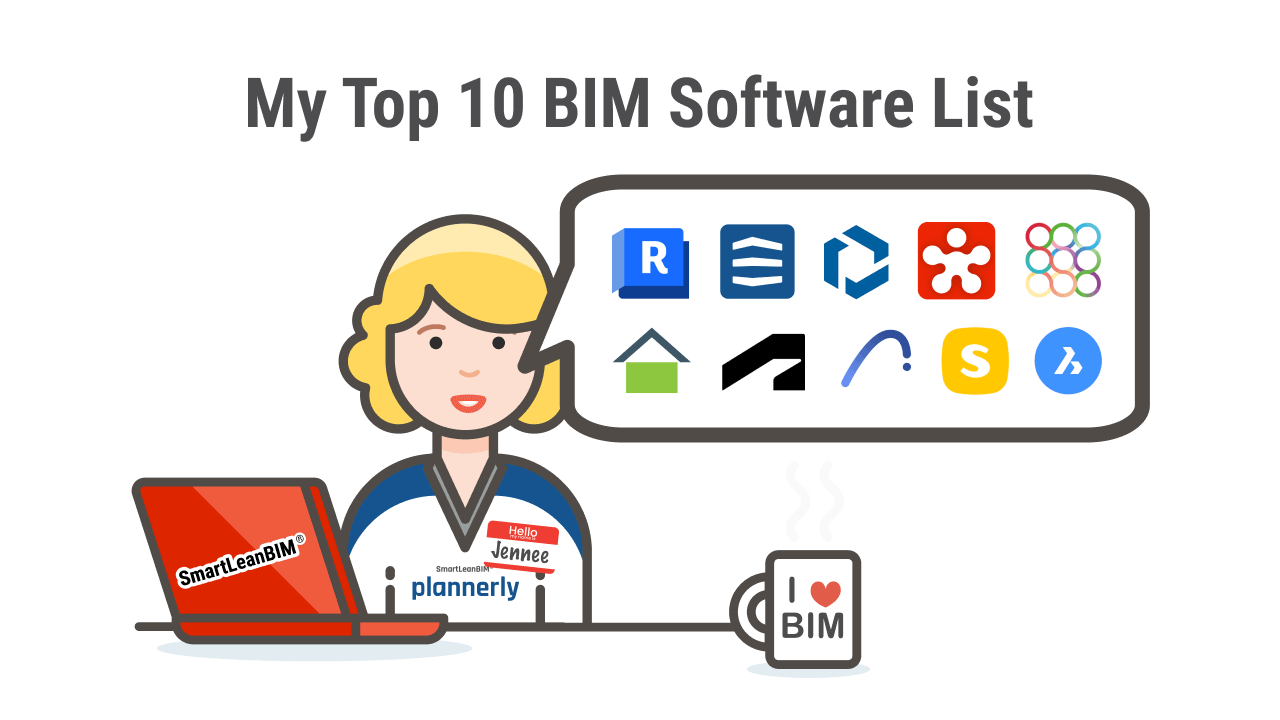
Civil construction projects always come with enormous amounts of risks. Without detailed planning and preparation, many issues can arise in operation, design, and construction. However, today’s digital era allows architects to manage risk in construction using different tools. BIM (Building Informational Modelling) has emerged as one of the crucial tools to enhance project efficiency. It is one of the reasons why BIM management services are always in demand.
As you know, a construction project depends on budget, timeframe, workflow, resources, workforce, etc. Hence, creating a risk mitigation plan for construction projects is crucial. Read the article to learn about BIM risk management techniques in construction projects.
What is Risk Mitigation in Construction?
Risk mitigation in construction is one of the effective strategies aimed at identifying and analysing risks to reduce them and ensure project success. It is one of the vital processes within the construction industry due to the high risks associated with project management, safety regulations, timely completion, and budget adherence. Following this process will prevent delays and help budget and safeguard against potential legal issues and safety hazards.
The most effective way to mitigate risk in construction is through the use of BIM. BIM risk management is a procedure that leverages digital representations of a structure to aid decision-making at every stage, from conceptualisation to design, construction, and operation. By integrating BIM tools into your risk analysis and management in a construction plan, you can identify potential issues before they become problems, thereby enhancing your overall strategic approach and improving project outcomes.
Types of Risk Mitigation in Construction Management Project
Construction management involves various risks, from safety to budget allocation. Henceforth, effective risk management techniques in the construction industry are important for reducing the chances of potential risks. Here are some of the common risks in construction management:
Budget Allocation
Cost overruns are common risks in construction projects, and they can result from underestimated initial costs, unexpected challenges, changes in project scope, and more. This is one reason why implementing a risk mitigation plan for construction projects that includes detailed cost analysis and consistent monitoring with BIM tools is crucial.
Project Delays
Delaying project completion can increase expenses and cause stakeholder disappointment. Effective planning and scheduling facilitated by BIM modelling are the best ways to eradicate such issues, allowing for realistic timelines and proactive adjustments.
Environmental Concerns
Environmental risks and unexpected site conditions can also disrupt the projects. Detailed environmental assessments and BIM modelling can predict many of these risks early in the design phase, allowing for adjustments before they escalate.
Workforce Challenges
Labour shortages can delay projects and increase costs. Strategic workforce planning and leveraging relationships with subcontracting firms and labour brokers can mitigate this risk. BIM tools aid in planning the workforce requirements based on the forecasted project phases.
Also Read: What are BIM Standards and Best Practices for Architects?
Tools Used for Risk Analysis and Management in Construction
With technological advancements, many tools have become vital in helping architects analyse, plan, and mitigate risks. Here are some of the key BIM technology tools that play a crucial role in risk analysis and management in the construction industry:
Autodesk Revit
Autodesk Revit is the powerhouse of BIM modelling, allowing accurate building modelling and providing tools to create more detailed construction plans. This software helps identify potential risks in the early planning and designing stages. Revit supports a risk mitigation plan for construction projects by enabling collaboration among architects, engineers, and construction professionals. It ensures every project parameter is well-coordinated and potential conflicts are resolved before they lead to costly corrections during construction.
Navisworks
Autodesk Navisworks complements Autodesk Revit by providing project review tools that enable integrating all project data into a single model. This integration is crucial for risk management and construction as it allows for advanced simulation and validation of project timelines, logistics, and resource allocation. This software is beneficial in managing large-scale projects where multiple contractors and teams are involved.
AutoCAD
AutoCAD is another essential Autodesk tool that is widely used in the construction industry. While primarily a drafting tool, its application in BIM modelling provides foundational designs that feed into more complex BIM systems like Revit. For risk management in construction industry, AutoCAD helps create detailed drawings that can be analysed for potential risks associated with design errors, ensuring that every angle, dimension, and material is meticulously planned and documented.
Revizto
Revizto is a real-time issue-tracking software for BIM models and 2D drawings that is vital for BIM management and risk management in construction. It allows project teams to collaborate effectively by integrating different BIM and CAD models into a unified platform where potential issues are identified and tracked until resolution. This ensures continuous communication and updates among all architects and stakeholders, which is crucial for timely and effective risk mitigation.
How Does BIM Help Mitigate Construction Risks?
Risk management in construction is one of the pivotal aspects of acquiring a project's success. It can involve multiple steps like identifying errors during designing periods or responding to project risks to enhance the impact of its outcomes. This is where BIM comes into play, and it is not just a tool for modelling, but more like a comprehensive management approach to improve the way professionals handle risk management for construction. Here is a list of roles BIM plays in risk management in construction:
- Enhanced Visualisation and Planning: BIM modelling provides a 3D visualisation of a construction project, which can be invaluable in identifying potential design problems or logistical issues. Detecting these issues early through BIM technology can prevent costly mid-construction changes and delays.
- Improved Collaboration: BIM facilitates better collaboration among all stakeholders involved in a construction project. Through platforms that support BIM management, teams can work together in real time, ensuring any changes are immediately reflected and communicated by all, thus minimising the risk of errors.
- Accurate Resource Management: With BIM, project managers can more accurately estimate the materials, labour, and time required to complete a project. This accuracy is crucial for avoiding the risk of over - or under-estimating resource needs, a common issue in traditional project management that can lead to significant budget and schedule overruns.
- Regulatory Compliance: Adhering to building codes and regulations is simplified with BIM. The software can be used to automatically check if the project designs comply with certain standards, reducing the risk of compliance-related issues and potential fines or rework.
The BIM benefits are highly impactful and can ensure that every phase of the construction process is planned, visualised in detail, and executed with a high degree of control and attentiveness.
Also Read: Top BIM Implementation Strategies for Architectural Firms
Best Risk Management Techniques in Construction
Managing risk in the construction industry is highly crucial due to its uncertainties. Effective and monitored risk management strategies can reduce the potential threats that can impact the timeline, budget, and safety of the project. Here are some of the best risk management techniques that are crucial in the in the construction sector:
Detailed Project Planning
One of the most common risk management strategies in construction involves detailed project planning. It helps identify potential risks early on and provides a clear pathway for execution, addressing possible delays and budget overruns. This includes a comprehensive review of the project scope, resource allocation, and timelines, ensuring every aspect of the project is carefully considered and managed.
Technology Usage
Leveraging modern technology is among the newer types of risk management strategies in construction. Tools such as project management software, BIM (Building Information Modeling), and other digital solutions can provide real-time data, enhance precision in planning and execution, and improve overall project management efficacy.
Risk Assessment and Analysis
Conducting regular risk assessments is a cornerstone in strategies to manage risk. This process involves the identification, analysis, and prioritisation of risks. By understanding the impact of various risks, architects and project managers can focus their efforts on the most significant threats, applying resources where they are needed the most to mitigate potential damages.
Contract Management
Effective contract management is one of the types of risk management strategies that ensure all parties involved in a construction project understand and adhere to their roles and responsibilities. This helps in avoiding legal disputes and ensures that any risk associated with subcontractors and suppliers is minimised. Clearly defined contracts can safeguard against scope creep and ensure that there are penalties for non-compliance.
Quality Control
It is another one of the common risk management strategies and Implementing quality control measures is another effective strategy to manage risk. This involves regular inspections and adherence to industry standards to ensure that all aspects of the project are up to par. Quality control helps in preventing reworks, which can be costly and time-consuming, and ensures the project's longevity.
Safety Management
Safety management is one of the critical types of risk management strategies in construction. By implementing strict safety protocols and ongoing training sessions, risks related to workplace accidents and injuries can be significantly reduced. This not only protects the workforce but also helps in avoiding delays and potential legal issues associated with workplace safety. Wearing proper protective gear, such as safety coveralls, plays a key role in minimizing exposure to hazardous materials and maintaining compliance with safety standards on-site.
Also Checkout: How To Become a Successful Construction Project Engineer
Risk Mitigation Process in Construction
The risk mitigation process in construction is one of the essential procedures for project success from inception through completion and more. It involves strategic planning across various phases. Here we will explore how risk mitigation works during different phases of a construction project:
Mitigating Risk During the Initial Design Phase
It begins with the initial and critical phase, where the most crucial decisions about the projects are made. BIM modelling plays a vital role here, enabling project teams to visualise building projects in three dimensions before construction begins. By using BIM tools, architects, designers and engineers can anticipate and resolve conflicts that could lead to costly corrections later. For example, BIM software allows for the detection of clashes between structural elements and mechanical systems, such as ductwork and piping, which can be resolved in the model rather than on the construction site.
The use of a comprehensive risk mitigation plan for construction projects at this stage involves a detailed analysis of various design options to assess their potential risks and impacts. Using BIM software helps with analyses, providing detailed insights that help in making informed decisions that adhere to safety standards, budget constraints, and functionality requirements.
Minimising Risk at the Construction Phase
Once the project moves to the construction phase, the focus of risk management in construction gradually shifts towards the on-site activities. The implementation of BIM tools for risk management in this phase enables real-time information-sharing updates. Site managers use BIM tools to monitor construction progress and ensure that it aligns with the project plans. This real-time capability helps in quickly addressing any discrepancies that might arise and reduces delays and cost overruns.
Moreover, safety is a significant concern during this phase. Utilising BIM to simulate construction sequences can help identify potential safety hazards and develop strategies to mitigate them before they pose a real risk to workers.
Tackling Issues During Operational Phase
Once construction is completed, the project enters the operational phase, where risk management and construction focus on ensuring the building performs as intended. During this phase, BIM provides a detailed record of the building's design and construction, including specifications for materials used, details on the design, and information about the systems and components installed. This information is crucial for effective facility management and routine maintenance
Construction Efficiency in the Long Run
In the long run, effective risk management for construction leads to higher construction efficiency. Buildings designed and constructed with BIM typically have fewer problems during construction, which translates to lower maintenance costs and less downtime due to repairs during the operational phase. The BIM benefits extend beyond the construction phase, offering insights into the best practices for facility management, energy usage, and even potential renovations or expansions.
Also Read: BIM Designer: Roles, Salaries, Scope, and Online Courses to Become One
Conclusion
The integration of BIM software into construction projects is a game-changer in the AEC (Architecture, Engineering, and Construction) industry. It is not just about showcasing technological advancement but also about how industry professionals are actively managing construction risks. By incorporating BIM management into your daily practices, you significantly increase your ability to mitigate potential risks that could otherwise impact your project's timeline, budget, and overall success. To fully grasp the power of BIM software and its usage, it is essential to have a solid understanding of its fundamentals and applications.
Novatr offers a select range of advanced courses, each one carefully curated for aspiring architects. Among these, the BIM Professional Course for Civil Engineers stands out as an exclusive opportunity. So, what are you waiting for? Apply for this BIM course and enhance your skills to discover your unique success path.
You can also check out our Resource pages for more updates!
Also Watch:
Was this content helpful to you











.jpg)